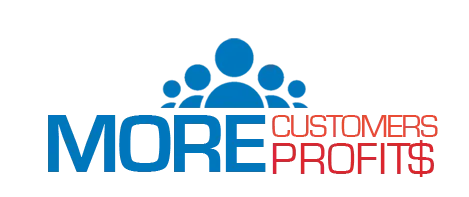Learn How The Most Profitable Business Owners In The World Use 'Counterintuitive Thinking' To Earn More Money, While Working Less!

How Does Profit Acceleration Actually Work?
Watch This Brief Video to Find Out!
We Have Programs and Services for
Any Size Business or Budget
One-On-One Coaching
Looking for professional help that’s affordable? I will help you increase your leads and sales, generate leads, create marketing that actually produces results, increase your revenue substantially, and position your business as the dominant force in your industry.
Group Coaching
My group coaching program will allow you to not only learn new business growth strategies from me, but also other small business owners with the same goals as you have for your own business. We will work on application of these strategies because knowledge is pointless without using it.
DIY Online Learning
Everything a Small Business Owner needs to know to improve profits. Includes access to all business spreadsheets, e-classes, internet marketing videos, sales letters, profitable headlines, proven marketing material strategies, articles, tips and much more!
Profit Acceleration Simulator
Success is achieved through small, incremental changes in multiple areas of your business. We've defined 12 areas that generate immediate increases both revenue and profits, without spending a cent on marketing or advertising.
We Have Programs and Services for
Any Size Business or Budget
One-On-One Coaching
Looking for professional help that’s affordable? I will help you increase your leads and sales, generate leads, create marketing that actually produces results, increase your revenue substantially, and position your business as the dominant force in your industry.
Group Coaching
My group coaching program will allow you to not only learn new business growth strategies from me, but also other small business owners with the same goals as you have for your own business. We will work on application of these strategies because knowledge is pointless without using it.
Profit Acceleration Simulator
Success is achieved through small, incremental changes in multiple areas of your business. We've defined 12 areas that generate immediate increases both revenue and profits, without spending a cent on marketing or advertising.
Hi, I'm Glenis Gassmann

I mentor Business Advisors to cut through the unseen and earn $25,000.00 p/m on a consistent basis and become part of the TOP 2%. I've been transforming businesses and lives for over 30 years and seen how the simple use of small incremental changes with proven and tested strategies across multiple areas of your business provides the power of compounding results and accelerated profits.
To achieve this level of success and performance in business, Glenis has equipped herself in the language of business "numbers", strategic marketing message, business communication ( everything can be sorted with effective communication) and listening powers that will clear any mental clutter from the Business Owner that can negatively impact the performance of any business. Glenis is also a Global speaker, Author, and Co-author who has co-written one of the 2020 Amazon Bestselling books "The Successful Mind".
With her extensive background in Business Coaching driven by her passion to champion profits for Business Owners and coupled with her accounting skills, she has successfully trained and produced top-notch leaders and coaches that are also making a difference now in their respective industries. She was instrumental in helping other Business Coaches transition to "online" coaching services during the depths of the lockdowns that COVID pandemic provided for us. With the use of a turn key system and digital assets the Coach was able to concentrate on what they love doing the best "Coaching" and the backend operational systems, processes, content and training was all handled to allow easy transition for all.




